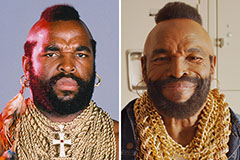Champagne emanates an allure that transcends mere effervescence. Its golden hue, shimmering in the light, entices the eye with promises of sophistication and celebration. Each sip is a delicate ballet of flavors, from crisp citrus notes to intricately layered hints of brioche and almond. Champagne embodies more than just a beverage; it's a symbol of triumph, a spark for unforgettable moments. From intimate gatherings to grand festivities, Champagne elevates any occasion into something truly special.
Discovering Elegance: A Champagne Primer
A world of effervescence awaits those eager to delve into the diverse landscape of Champagne varieties. From the crisp, delicate Brut to the richly textured indulgent Rosé, each bottle holds a unique story whispered through its complex aromas and tantalizing flavors. Venture on a journey through these distinguished styles as we explore the secrets behind every bottle's distinctive character.
- Savor in the iconic Brut, Champagne's most popular style, known for its balanced acidity and subtle complexity.
- Delight yourself in the seductive allure of Rosé Champagne, a blend of dark grapes that impart a captivating ruby blush.
- Explore on a fruity adventure with Demi-Sec, a style that celebrates the Champagne's naturally vibrant fruit flavors.
Delving the Bubbly: Revealing Champagne's Complex Flavors
Champagne, often celebrated for its festive effervescence, unveils a world of complexity far past the initial sparkle. A glass of this luxurious potion can be a exploration through an array of delicate notes. From delicate hints of apple to complex undertones of toast, Champagne dazzles the palate with its unpredictable character. Regional influences play a significant role in shaping these characteristics, yielding a tapestry of taste that transforms with each glass.
Champagne: A Symphony for Your Senses
Elevate your dining experience by exploring the fascinating/intriguing/delightful world of champagne pairings. From delicate sparkling/effervescent/bubbly wines to bolder, richer/full-bodied/complex expressions, champagne possesses a remarkable versatility/adaptability/flexibility that can complement/enhance/elevate an array of culinary masterpieces/creations/experiences. Whether you're indulging in a lavish/sumptuous/opulent feast or a simple yet flavorful/delicious/refined meal, the right champagne selection/choice/pairing can transform your palate/taste buds/dining experience into a truly unforgettable journey.
A classic pairing is champagne with oysters/sushi/seafood, as the wine's acidity/brightness/crispness cleanses/balances/harmonizes the oceanic/fresh/salty flavors. For hearty/rich/savory dishes like roasted meats/duck/steak, opt for a champagne with more body/deeper notes/greater structure to counterbalance/complement/stand up to the robust/intense/flavorful richness.
- Consider/Explore/Think about pairing lighter champagnes with salads/appetizers/starters
- Discover/Unveil/Find unexpected pairings with cheese/fruit/chocolate
Remember, the art/science/magic of champagne pairing is all about experimentation/discovery/personal preference. Don't be afraid to venture beyond/step outside/try something new and create your own culinary/flavorful/memorable combinations.
Bubbly Aspirations: A Celebration of Life's Moments
Raise a glass of life's exquisite moments! From heartfelt triumphs to simple delights, there's a reason to celebrate. Champagne, with its golden tinge and champagne delicious fizz, becomes the ultimate companion on this journey. Each glug is a symbol of life's beauty, a chance to pause and savour.
It elevates our gatherings, transforming ordinary moments into memorable experiences. So, let us cherish these precious instances and forge memories that glitter like the finest champagne.
From Vineyard to Glass: The Journey of a Bottle of Champagne
The production of Champagne is a laborious process that spans several years. It all starts in the fertile vineyards of the Champagne region in France, where renowned grapes like Chardonnay, Pinot Noir, and Pinot Meunier are harvested. Once picked, these grapes are moved to the producer's facilities, where they undergo a series of complex transformations.
The first step involves macerating the grapes to obtain their precious juice. This juice is then fermented into a base wine, which is further blended according to the producer's unique blend. To achieve the characteristic fizz of Champagne, a secondary fermentation takes place in bottles. This involves adding yeast and sugar to the wine, which generates carbon dioxide gas, resulting in those delightful fizzy sensations.
dosage is then introduced to adjust the flavor profile.
After this meticulous process, the Champagne is ready to be corked and delivered to enthusiasts around the world, where it can be appreciate on special occasions or simply as a delightful beverage.
 Mr. T Then & Now!
Mr. T Then & Now! Elin Nordegren Then & Now!
Elin Nordegren Then & Now! Susan Dey Then & Now!
Susan Dey Then & Now! Lacey Chabert Then & Now!
Lacey Chabert Then & Now! Nadia Bjorlin Then & Now!
Nadia Bjorlin Then & Now!